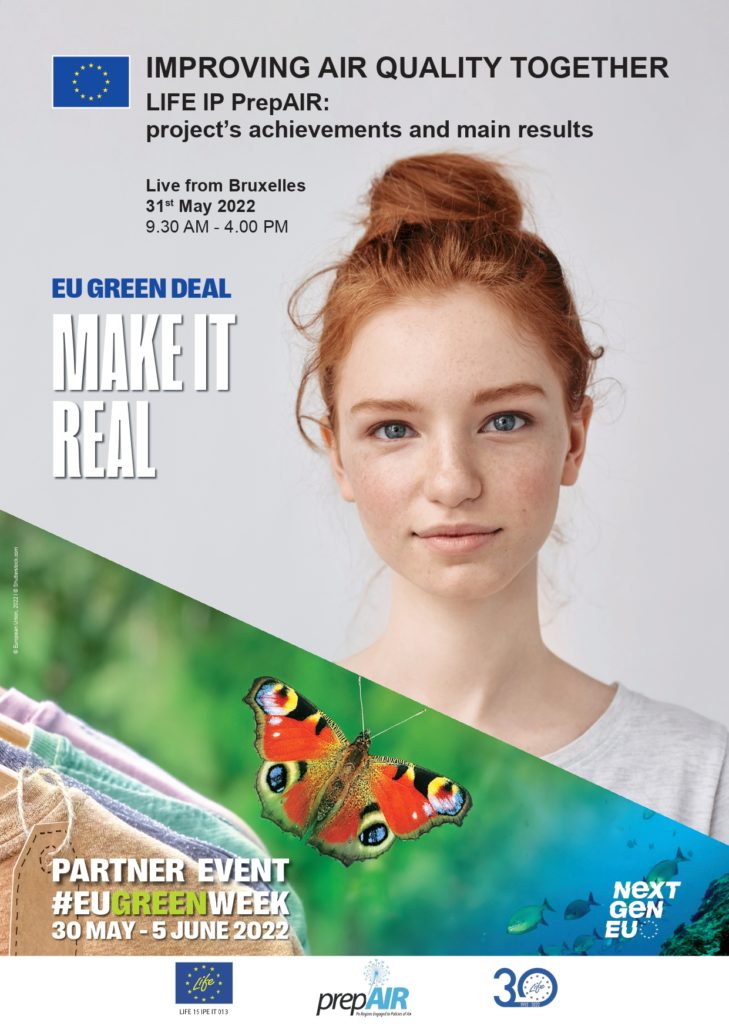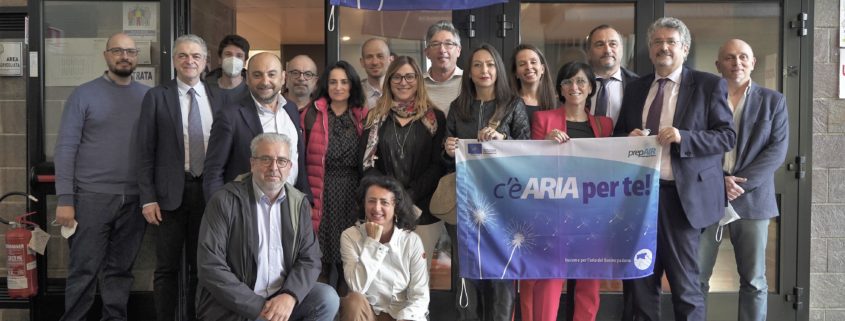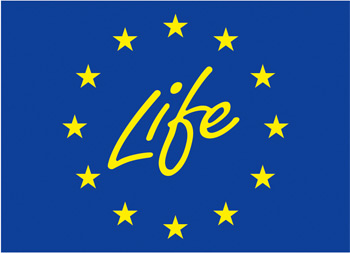Agriculture plays a central role in the air quality issue of the Po valley, this has emerged more and more in recent years. The issue has been studied in depth within the LIFE PrepAIR project.
After five years of work, with the project entering its final stage, the results of the pillar dedicated to agriculture and the one dedicated to emission evaluation and monitoring were presented during the conference “Agricolture and Air quality”, that took place in Bologna in the presence of the project partners and speakers hosted by Regione Emilia Romagna, Prepair’s project leader. More than 250 participants followed the event remotely.
The results presented shows the great effort that the project partners carried out to deepen and study the mechanisms that regulate the relationship between agriculture and air quality. These mechanisms depend on a large number of variables and factors. Emissions, for example, depend on the chemical composition of the manure and fertilizers used, on the biological cycles of the animals, on the variables related to the composition of the soil and on the meteorological and climatic variables, as well as on the absorption capacity of the plants.
Particular attention has been paid to fine aerosol (PM 2.5) produced by ammonia emitted by livestock waste (in the relaying, storage and spreading phases) if not managed properly.
The “BAT Tool”, a web-based app developed by Prepair’s project to estimate ammonia emissions into the atmosphere, is now available and free to use. It allows to calculate emissions starting from data on techniques applied in intensive pig farming and poultry. The analyzes carried out so far shows that this tool has a considerable potential in developing technological assessments, both at a company and territorial level. To further develop this potential will have to be supported by the harmonized use of data sources, relating to the actual structure of the farms in the different territorial contexts.
The speakers that intervened during the day explored the issues and proposed solutions to reduce ammonia emissions thanks to the use of good practices, derived from the investigations and experiments. Since 2019 BAT Tool has been used almost five thousand business simulations, an impressive given important result; since January 22, Bat Tool Plus is available, an upgraded version of the original tool. One of the future objectives is therefore to expand the application of the BAT-Tool to assess the application of different techniques in the different emission phases, to quantify the achievable emission reduction in each scenario.
The proposal is based on the identification of defined and achievable ammonia emission reduction targets related to the application of each specific good practice. The predetermined reduction target can therefore be chosen by each farm within the available BATs.
As a conclusion, a round table took place with the participation of the Directors of the Environment and Agriculture of the Po Valley Regions. From the discussion emerged the importance to include specific measures in the policies that are under definition at national and European level. However the current situation requires more resources then the ones currently available and an active involvement of the national government.
Furthermore, as a result of the debate it was confirmed that, in some regions, nitric fertilizer are already buried within 12 hours from the spread: thus the envisaged measures are applicable, even if mediation is necessary to overcome the resistance of smaller companies worried by the economic impact of the measures. After all, as the project managers stated, “if we do not anticipate the burial time we have no effect”. And they add: “thirty years ago, water protection plans made it clear that agriculture can affect the quality of the water resource. Today we understand that it can affect the air. But there is a problem of resources: we must understand on a national scale that there is a real emergency, that we are on very important orders of magnitude. And we must act in a not too long time, otherwise we will spend more sanctions than we would with new investments “.
In conclusion all the speakers underlined that the added value of PrepAir is precisely the creation of relations between persons and institutions that was possible because of the joint work and has been an absolute unprecedent in the sector. In other words, the project has led the partners’ Environment and Agriculture offices to talk to each other in an increasingly stable and convinced way: creating a fundamental synergy to better address the problems linked to pollution, and to proceed toward the future jointly.
Dowload the slides of the conference (mostly in Italian)
Watch the picture gallery.




